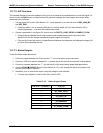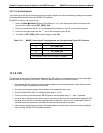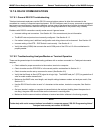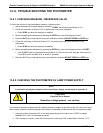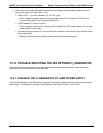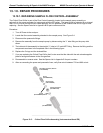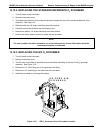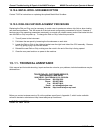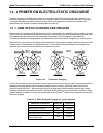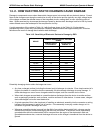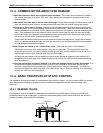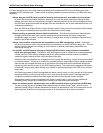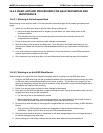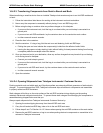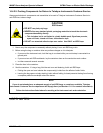
M400E Ozone Analyzer Operator’s Manual 347BA Primer on Electro-Static Discharge
14. A PRIMER ON ELECTRO-STATIC DISCHARGE
Teledyne Instruments considers the prevention of damage caused by the discharge of static electricity to be
extremely important part of making sure that your analyzer continues to provide reliable service for a long time.
This section describes how static electricity occurs, why it is so dangerous to electronic components and
assemblies as well as how to prevent that damage from occurring.
14.1. HOW STATIC CHARGES ARE CREATED
Modern electronic devices such as the types used in the various electronic assemblies of your analyzer, are very
small, require very little power and operate very quickly. Unfortunately, the same characteristics that allow them
to do these things also make them very susceptible to damage from the discharge of static electricity.
Controlling electrostatic discharge begins with understanding how electro-static charges occur in the first place.
Static electricity is the result of something called triboelectric charging which happens whenever the atoms of the
surface layers of two materials rub against each other. As the atoms of the two surfaces move together and
separate, some electrons from one surface are retained by the other.
+
+
Materials
Makes
Contact
PROTONS = 3
E
LECTRONS = 3
N
ET CHARGE = 0
P
ROTONS = 3
E
LECTRONS = 3
N
ET CHARGE = 0
Materials
Separate
+
PROTONS = 3
E
LECTRONS = 2
N
ET CHARGE = -1
+
PROTONS = 3
E
LECTRONS = 4
N
ET CHARGE = +1
Figure 14-1: Triboelectric Charging
If one of the surfaces is a poor conductor or even a good conductor that is not grounded, the resulting positive or
negative charge cannot bleed off and becomes trapped in place, or static. The most common example of
triboelectric charging happens when someone wearing leather or rubber soled shoes walks across a nylon
carpet or linoleum tiled floor. With each step, electrons change places and the resulting electro-static charge
builds up, quickly reaching significant levels. Pushing an epoxy printed circuit board across a workbench, using
a plastic handled screwdriver or even the constant jostling of Styrofoam
TM
pellets during shipment can also build
hefty static charges
Table 14-1: Static Generation Voltages for Typical Activities
MEANS OF GENERATION 65-90% RH 10-25% RH
Walking across nylon carpet 1,500V 35,000V
Walking across vinyl tile 250V 12,000V
Worker at bench 100V 6,000V
Poly bag picked up from bench 1,200V 20,000V
Moving around in a chair padded
with urethane foam
1,500V 18,000V
04315 Rev. C1 259



